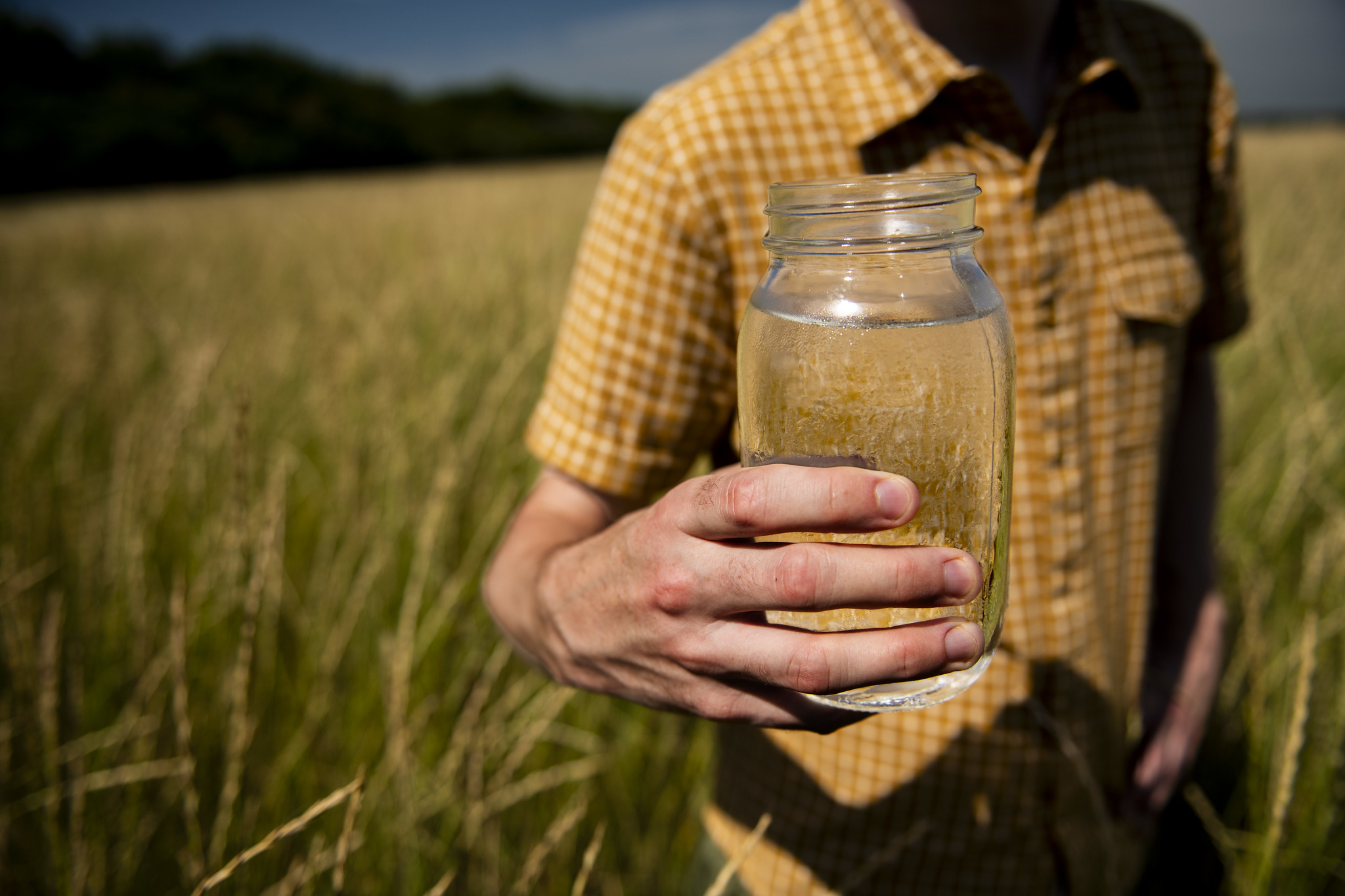Press release: ‘A win-win’ — Report finds new crops could boost farmer profits while protecting MN’s waters

Photo by Dodd Demas for FMR/FGP.
For immediate release, January, 4, 2024.
(Free to republish with attributions and links intact.)
The first-of-its-kind analysis presents unused winter cropland as an untapped opportunity
What happens beneath the snow that blankets Minnesota’s croplands every winter?
Usually, nothing. After the fall harvest, almost all that soil sits empty and unutilized until the next spring.
A new report suggests this is a missed opportunity — and that by covering those unused acres with harvestable crops, the state could increase farm earnings, improve soil health and clean up the state’s waters.
“Year after year in Minnesota, we see millions of acres of cropland left barren and exposed to the elements from late fall into early spring,” said Trevor Russell, water program director with nonprofit Friends of the Mississippi River. “That’s seven or eight months of no productivity.”
Russel is one of the lead authors of “Putting Down Roots,” the new report that offers a clear-eyed analysis of crops being developed by the University of Minnesota’s Forever Green Initiative. The researchers found that increased adoption of these crops, even at modest levels, could significantly reduce overall nitrogen loss (23%) and soil erosion (35%) by 2050, while also blunting greenhouse gas emissions.
This is possible because the crops provide “continuous living cover,” explained Forever Green’s Associate Director Mitch Hunter. That means live roots in the ground year-round to anchor the soil, while above, green growth helps keep excess nutrients from escaping into nearby waters.
What makes these crops special is the financial upside, with the report projecting a potential 20% increase in on-farm profits come 2050 due to growing more of these crops.
“We sometimes call these ‘cash cover crops’ because they can be harvested and sold,” Hunter said. “That gives them a significant advantage over conventional cover crops.”
Several of the in-development crops are “winter annuals” that are planted in the fall and harvested the following spring, slotting into cropland that otherwise isn’t being used — with minimal impact on conventional summer annuals such as corn and soybeans.
Winter camelina and domesticated pennycress are prime examples of this.
The report estimates that 5.5 million acres of these winter annual oilseeds could be planted in Minnesota over the next quarter century. Driving this is the rapidly growing demand for cleaner transportation. Both crops can be converted into renewable biofuels that produce lower greenhouse gas emissions than standard diesel or jet fuel.
“This is an opportunity to turn bare, unused cropland acres into powerful engines for a healthier environment and economy,” said Russell. “I call it a win-win.”
“Putting Down Roots” was released by Friends of the Mississippi River, Ecotone Analytics and the Forever Green Partnership. A 4-page overview (PDF) and the full report are available to download via fmr.org/clc-report.
Report overview
See the 4-page overview
Share the 4-page overview
If you or your web admin would like to embed the overview, here's the code to post the overview on your own webpage.
Media contacts
Report leads
- Mitch Hunter, PhD, he/him, Associate Director, Forever Green Initiative Adjunct Assistant Professor, Dept. of Agronomy and Plant Genetics, University of Minnesota College of Food, Agriculture and Natural Resource Sciences, — mhunter@umn.edu, Cell: 651.675.7380
- Lead FMR contact until February 13, 2024: Peter LaFontaine, he/him, Agricultural Program Manager, Friends of the Mississippi River — plafontaine@mr.org, Cell: 928.814.3590
- Lead FMR contact after February 13, 2024: Trevor Russell, he/him, Water Program Director, Friends of the Mississippi River — trussell@fmr.org, Please text to set up a quick call: 612.388.8856
Report advisors from the Forever Green Partnership
The Forever Green Partnership is a lead report partner. (All organizations referenced in this release are founding partners and members.)
-
Erin Meier, she/her, Director, Green Lands Blue Waters, Minnesota Institute for Sustainable Agriculture, University of Minnesota — tegtm003@umn.edu, Office: (612) 625-3709, Cell: 507.272.1956
-
Steve Morse, he/him, Executive Director, Minnesota Environmental Partnership — stevemorse@mepartnership.org, 651.290.0154
Farmers
-
Paul Novotny, independent farmer not directly involved in the creation of the report, planted the oilseed camelina highlighted in the report this fall and previously planted Kernza to successfully decrease water pollution, Chatfield city council representative and former truck driver in SE MN. Featured in MPR. Photos of Paul are in the image album.— paulcti@qwestoffice.net, Cell: 507.269.9075. (Feel free to text in advance.)
-
Jane Jewett (also a report advisor and reviewer) Livestock farmer and rotational grazier, staff lead for the Midwest Perennial Forage Working Group and co-lead, Match Made in Heaven: Livestock + Crops of Green Lands Blue Waters, Associate Director of Minnesota Institute for Sustainable Agriculture, University of Minnesota, Website management for Forever Green Initiative and Minnesota Institute for Sustainable Agriculture — jewet006@umn.edu, Cell: 218.670.0066
Photos
High-resolution downloadable images with credits are available in this online album.
Become a River Guardian
Sign up and we'll email you when important river issues arise. We make it quick and easy to contact decision-makers. River Guardians are also invited to special social hours and other events about legislative and metro river corridor issues.